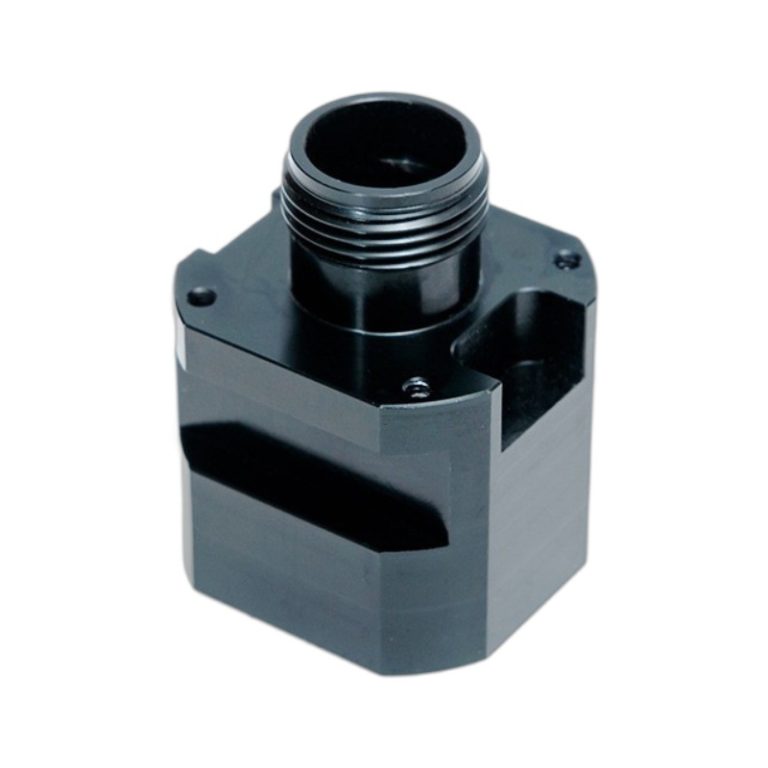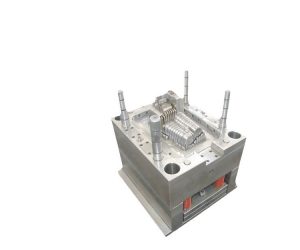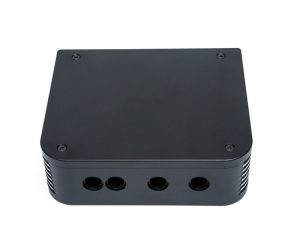Examine the many ways that rapid prototyping is used in different industries, emphasizing how it shortens product development cycles, lowers expenses, and encourages innovation. Rapid prototyping is transforming the design and commercialization of a wide range of products, including consumer electronics and medical devices.
Rapid prototyping, once a niche pursuit, has metastasized into a fundamental pillar of modern industrial innovation. Its transformative impact transcends mere acceleration of product development; it represents a paradigm shift, introducing emergent properties and unpredictable outcomes that fundamentally reshape the design process itself. This isn't simply about faster iteration; it's about the unpredictable blossoming of design possibilities previously constrained by the limitations of traditional manufacturing.
I. Beyond Linearity: The Chaotic Dynamics of Prototyping
The traditional, linear model of product development – a sequential progression from concept to prototype to production – is now fractured. Rapid prototyping introduces a chaotic element, a fertile ground for emergent design solutions. The iterative nature of the process, fueled by the immediacy of feedback loops, fosters an unpredictable evolution of form and function. This non-linearity, far from being a weakness, is the source of its revolutionary power, allowing for the serendipitous discovery of optimal solutions that would remain hidden within a strictly linear approach. The very act of prototyping becomes a generative process, where each iteration acts as a catalyst for unforeseen advancements.
II. The Algorithmic Foundry: Manufacturing's Algorithmic Turn
The technological underpinnings of this revolution are multifaceted and deeply intertwined. Additive manufacturing, far from being a mere extension of subtractive methods, represents a fundamental rupture. 3D printing, with its capacity for generating complex geometries previously deemed impossible, acts as an algorithmic foundry, translating digital designs into physical realities with unprecedented freedom. This freedom, however, introduces a new layer of complexity. The potential for unforeseen interactions between layers, materials, and design parameters generates a landscape of unpredictable outcomes, demanding a sophisticated understanding of material behavior and process optimization.
Furthermore, the precision machining capabilities of CNC systems, no longer relegated to the final stages of production, are now integral to the prototyping process itself. The ability to rapidly iterate on designs through precise subtractive processes, coupled with the additive capabilities of 3D printing, creates a powerful synergy, pushing the boundaries of design complexity and material exploration. The interplay between these seemingly disparate techniques generates a dynamic tension, leading to unexpected and often superior solutions.
III. The Digital Crucible: Simulation, Emergence, and the Unforeseen
The digital realm is no longer a mere precursor to physical prototyping; it is a fully integrated, dynamic component of the process itself. Advanced 3D modeling software, coupled with sophisticated simulation and analysis tools, allows designers to explore a vast design space, predicting and mitigating potential failures before physical manifestation. However, the complexity of these simulations often reveals unforeseen emergent behaviors, challenging initial assumptions and pushing the boundaries of design understanding. The digital crucible allows for the controlled exploration of chaos, fostering the emergence of innovative solutions that defy prediction.
The seamless integration of digital design and physical prototyping creates a feedback loop of unprecedented power. Each iteration, whether digital or physical, informs and refines the subsequent stages, creating a self-organizing system that drives innovation in unpredictable and often breathtaking ways. The future of rapid prototyping lies not in perfecting the predictability of the process, but in harnessing its inherent unpredictability to unlock a new era of design innovation.
IV. Material Metamorphosis: Advanced Substances and the Prototyping Paradox
The rapid prototyping paradigm has undergone a profound material transformation. We've moved beyond the simplistic plastics and resins of yesteryear, venturing into a realm of high-performance thermoplastics, exotic alloys, and sophisticated composites. This evolution isn't merely incremental; it represents a fundamental shift in our ability to mimic final product characteristics – aesthetics, functionality, and performance – with unprecedented fidelity. The very act of prototyping is now inextricably linked to the material's inherent properties, demanding a deeper understanding of material science than ever before. The selection process is no longer a simple choice but a complex optimization problem, fraught with trade-offs and unforeseen consequences.
Material Selection: A Multifaceted Optimization
Material selection for rapid prototyping transcends simple property evaluation. It necessitates a holistic approach, considering not only mechanical, thermal, and chemical properties but also factors such as manufacturability, cost, and environmental impact. The optimization process demands advanced computational tools and a nuanced understanding of material behavior under stress, fatigue, and various environmental conditions. The goal is not merely to find a suitable material, but to identify the optimal material configuration, potentially involving intricate layering, surface treatments, and additive manufacturing techniques to achieve the desired performance envelope. Failure to account for these complexities can lead to catastrophic prototype failures and costly delays.
V. Iterative Design: Navigating the Labyrinth of Functionality
Rapid prototyping's true power lies not in its speed, but in its capacity to facilitate an iterative design process of unparalleled complexity. The creation and testing of physical models is not a linear progression but a dynamic feedback loop, where each iteration informs the next, leading to a potentially unpredictable, yet ultimately optimized, design. This iterative approach, fueled by the agility of rapid prototyping, allows for the exploration of a vast design space, revealing unforeseen synergies and exposing critical flaws early in the development cycle. The process is inherently nonlinear, often involving unexpected detours and iterative refinements that challenge conventional design methodologies.
Functional Validation: Beyond the Visual
Functional validation using rapid prototypes moves beyond superficial aesthetic assessments. It involves subjecting prototypes to rigorous testing regimes, pushing them to their limits to uncover latent weaknesses and potential failure modes. This process often necessitates the development of specialized testing protocols and the integration of advanced simulation techniques to predict real-world performance. The data generated informs not only design refinements but also the development of robust quality control measures for the final product. The goal is not merely to validate functionality, but to quantify performance and predict reliability with a high degree of confidence.
VI. Cost-Effective Innovation: A Paradigm Shift in Economics
The economic benefits of rapid prototyping extend beyond mere cost reduction. It represents a fundamental shift in the economics of innovation, accelerating the development cycle and mitigating the risks associated with bringing new products to market. The ability to rapidly iterate and validate designs minimizes costly rework and reduces the likelihood of launching flawed products. This translates into significant cost savings, faster time-to-market, and a competitive advantage that can be decisive in today's rapidly evolving marketplace. The true return on investment lies not just in the reduced costs, but in the increased probability of market success.
Streamlining Innovation: Accelerating the Inevitable
Rapid prototyping's impact on the product development lifecycle is transformative. It accelerates the inevitable convergence of design, engineering, and manufacturing, fostering a collaborative environment where iterative feedback loops drive continuous improvement. This streamlined process minimizes waste, reduces lead times, and fosters a culture of innovation that is both efficient and responsive to market demands. The ultimate outcome is not merely a cost-effective product, but a superior product, launched faster and with a significantly higher probability of success.
VII. Sectoral Convergence and the Unpredictable Trajectory of Rapid Prototyping:
The pervasive influence of rapid prototyping transcends simplistic sectoral categorization. Its transformative impact reverberates across seemingly disparate fields – from the meticulously engineered intricacies of aerospace to the nuanced demands of personalized medicine, and the volatile landscape of consumer electronics. This isn't mere technological diffusion; it's a fundamental shift in the very paradigm of innovation. The ability to iteratively refine designs, driven by real-time feedback loops and data-driven optimization, is disrupting established hierarchies and fostering unforeseen synergies. The unpredictable nature of this technological convergence presents both immense opportunities and significant challenges, demanding a nuanced understanding of its complex interplay with existing industrial structures.
A. Consumer Goods: The Darwinian Dynamics of Accelerated Innovation:
The consumer goods sector, a crucible of relentless competition and fleeting trends, finds itself fundamentally reshaped by rapid prototyping. The traditional linear model of product development – concept, design, testing, production – is rendered obsolete. Instead, agile iterations, fueled by rapid prototyping's capacity for near-instantaneous physical manifestation of digital designs, allow for unprecedented responsiveness to market fluctuations and evolving consumer preferences. This accelerates the pace of innovation to a degree previously unimaginable, creating a Darwinian environment where only the most adaptable survive. However, this rapid evolution also necessitates a sophisticated understanding of lifecycle management and the potential for rapid obsolescence.
VIII. Bio-Fabrication and the Algorithmic Revolution in Healthcare:
The application of rapid prototyping in the medical field transcends mere efficiency gains; it represents a paradigm shift towards personalized and predictive healthcare. The ability to generate patient-specific implants, prosthetics, and even bio-engineered tissues challenges the very definition of medical intervention. This isn't simply about faster production; it's about the creation of entirely new possibilities, driven by algorithmic design and the convergence of additive manufacturing with advanced biomaterials. The ethical and societal implications of this algorithmic revolution in healthcare are profound, demanding careful consideration of access, equity, and the potential for unforeseen consequences.
A. Bioprinting and the Algorithmic Body:
The fabrication of custom prosthetics and implants is merely the nascent stage of a far more ambitious endeavor: the creation of bio-printed organs and tissues. This frontier, still largely unexplored, promises to revolutionize transplantation, regenerative medicine, and our understanding of the human body itself. However, the challenges are immense – from ensuring biocompatibility and functionality to addressing the ethical complexities of creating synthetic life. The unpredictable nature of biological systems necessitates a cautious yet ambitious approach, balancing the immense potential with the inherent risks.
IX. Cultivating a Culture of Algorithmic Design: Education in the Age of Rapid Prototyping:
The integration of rapid prototyping into educational curricula is not merely a matter of equipping students with technical skills; it's about fostering a fundamentally different approach to design and problem-solving. The ability to rapidly iterate, test, and refine designs cultivates a mindset of experimentation and resilience, crucial for navigating the unpredictable complexities of the modern world. This necessitates a shift away from traditional, linear pedagogical models towards more project-based, hands-on learning environments that encourage collaborative innovation and algorithmic thinking.
A. The Algorithmic Designer: A New Species of Innovator:
The future designer will be fluent not just in CAD software, but also in data analysis, algorithmic design, and the principles of sustainable manufacturing. They will be comfortable navigating the ethical and societal implications of their creations, understanding the broader context in which their innovations operate. Education must adapt to cultivate this new species of innovator, capable of harnessing the power of rapid prototyping for the betterment of humanity.
X. The Sustainability Imperative: Navigating the Ethical Landscape of Rapid Prototyping:
The rapid expansion of rapid prototyping necessitates a concurrent focus on sustainability and ethical considerations. The environmental impact of material consumption, energy usage, and waste generation must be carefully managed. The democratization of access to this technology presents both opportunities and challenges, requiring careful consideration of equitable distribution and the potential for misuse. A proactive approach, emphasizing sustainable materials, closed-loop systems, and responsible innovation, is crucial to ensuring that this transformative technology contributes to a more just and sustainable future.
A. Circular Economy and the Algorithmic Material:
The future of rapid prototyping lies in the development of truly circular systems, where materials are reused and recycled, minimizing waste and environmental impact. This requires a shift towards bio-based and biodegradable materials, as well as the development of algorithmic design principles that optimize material usage and minimize waste generation. The integration of AI and machine learning can further enhance the efficiency and sustainability of rapid prototyping processes.
XI. Future Horizons: Unpredictable Trajectories in Accelerated Prototyping
The rapid prototyping paradigm is not merely evolving; it's undergoing a chaotic, yet potentially transformative, metamorphosis. Predicting its future is akin to charting a course through a turbulent, unmapped ocean. While trends such as AI-driven design optimization and the integration of advanced materials are readily apparent, the true disruptive forces will likely emerge from unexpected confluences. Consider, for instance, the synergistic potential of quantum computing applied to material simulation, enabling the design of metamaterials with properties previously relegated to science fiction. Or the unpredictable impact of bioprinting on the creation of complex, living prototypes, blurring the lines between the biological and the engineered. The future of rapid prototyping is not a linear progression, but a complex, emergent system poised for unpredictable leaps.
Converging Technologies: A Chaotic Symphony of Innovation
The ecosystem supporting accelerated prototyping is no longer a neatly orchestrated ensemble; it's a chaotic symphony of converging technologies. Advanced sensors, augmented reality, and cloud computing are merely the opening notes. The true crescendo will be driven by the unpredictable interactions of these technologies with others – nanotechnology, bio-integration, and potentially even technologies we haven't yet conceived. This convergence will not simply streamline the prototyping process; it will fundamentally redefine it, creating a feedback loop of unprecedented speed and complexity, potentially leading to both breakthroughs and unforeseen challenges. The very definition of "prototype" may become obsolete as the line between digital design and physical manifestation blurs beyond recognition.
XII. Conclusion: Accelerated Prototyping – A Catalyst for Disruptive Innovation, and its Unforeseen Consequences
Rapid prototyping is no longer a mere tool; it's a catalyst for disruptive innovation, a force capable of reshaping industries and societies. Its impact extends far beyond the realm of product development, penetrating into areas such as personalized medicine, sustainable manufacturing, and even geopolitical power dynamics. However, this transformative power comes with inherent risks. The accelerated pace of innovation may outstrip our ability to adequately assess the ethical, social, and environmental implications of the technologies it produces. The future of rapid prototyping is not solely a question of technological advancement, but also of responsible stewardship – a navigation of the uncharted waters of innovation, mindful of both its immense potential and its inherent uncertainties. The challenge lies not just in pushing the boundaries of what's possible, but in ensuring that progress serves humanity, rather than the other way around.
Preguntas frecuentes
1. What are the key techniques and technologies that form the foundation of rapid prototyping applications?
The rapid prototyping toolkit is built upon a diverse array of advanced manufacturing techniques and cutting-edge technologies. At the forefront of this toolkit are the additive manufacturing processes of 3D printing, which allow for the creation of complex, customized parts and components by building them up layer by layer. Alongside 3D printing, the rapid prototyping landscape has also been transformed by the ongoing evolution of precision machining and computer numerical control (CNC) technology, which enables the fabrication of high-quality prototypes through the precise shaping and finishing of parts.
2. How have advancements in 3D modeling and design software impacted the rapid prototyping workflow?
The rise of rapid prototyping has been inextricably linked to the parallel advancements in 3D modeling and design software, which have become the digital foundation upon which innovative products are conceived and brought to life. The integration of powerful CAD (computer-aided design) suites, specialized simulation and visualization tools, and other digital design technologies into the rapid prototyping workflow has dramatically streamlined the product development process, allowing designers and engineers to quickly iterate on their concepts, test their ideas, and refine their designs before committing to physical prototypes. This digital-to-physical approach has not only accelerated the pace of innovation but also reduced the overall costs and resources required to bring new products to market.
3. How have the continued advancements in material science impacted the capabilities and applications of rapid prototyping?
As the rapid prototyping landscape has evolved, so too have the materials used in the fabrication of tangible models and functional samples. From the early days of simple plastic and resin-based prototypes to the emergence of high-performance thermoplastics, metals, and even composite materials, the material science behind rapid prototyping has continued to advance, empowering innovators to create prototypes that more accurately reflect the final product in terms of appearance, functionality, and performance. The careful selection and optimization of materials for rapid prototyping applications have become critical considerations, as designers and engineers seek to choose the substances that best suit the specific requirements of their projects, ensuring that their prototypes not only look the part but also behave like the final product.
4. What are some of the key economic benefits that rapid prototyping has brought to the product development process?
The transformative impact of rapid prototyping extends far beyond the technical and creative realms, as this technology has also proven to be a powerful driver of economic efficiency and cost-effectiveness in the product development process. By enabling the rapid and iterative creation of physical models, rapid prototyping has helped to reduce the time and resources required to bring new products to market, ultimately lowering the overall costs associated with innovation and providing a significant competitive advantage to the organizations that have embraced this revolutionary approach. At the heart of the economic benefits of rapid prototyping is its ability to streamline the product development lifecycle, allowing designers and engineers to quickly identify and address potential issues before committing to the more resource-intensive phases of production.
5. How is the rapid prototyping industry addressing the ethical and environmental considerations associated with this transformative technology?
As the applications of rapid prototyping continue to expand, the industry and its users have a responsibility to approach this technology with a keen awareness of the ethical and environmental implications that come along with it. One of the key areas of focus in the responsible use of rapid prototyping is the integration of sustainable practices and the principles of the circular economy. By carefully selecting eco-friendly materials, implementing closed-loop recycling programs, and optimizing the energy efficiency of rapid prototyping systems, innovators can ensure that their creative endeavors have a minimal environmental footprint, contributing to a more sustainable future for the manufacturing industry as a whole.


